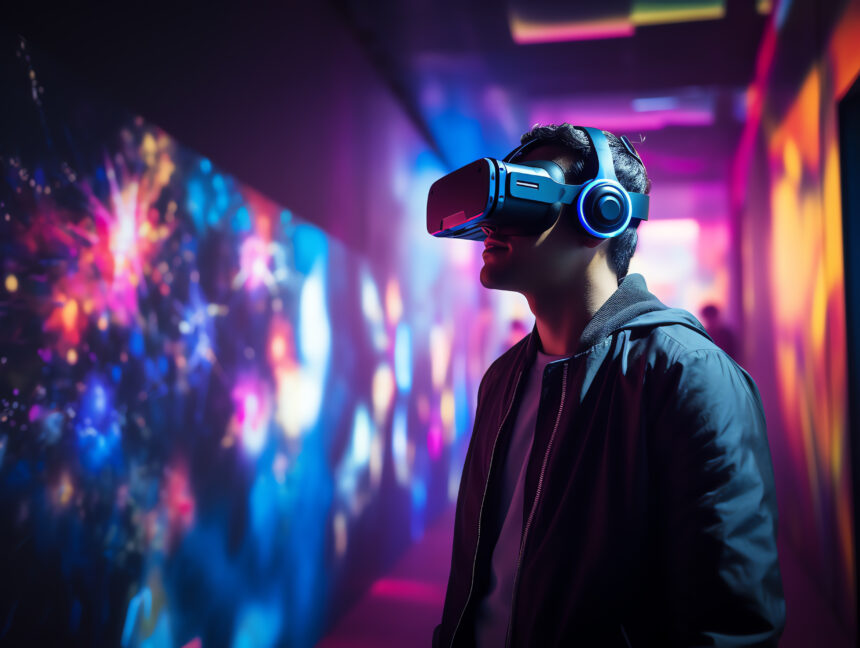As the world hurtles toward a new digital era, major tech giants are placing their bets on a technology that promises to reshape how we interact with both the digital and physical realms—augmented reality (AR). Google, Meta, and Snap, three of the world’s most influential technology companies, are all doubling down on AR, seeing it not just as an experimental gimmick but as a cornerstone of future computing.
From wearable AR glasses to immersive advertising and real-time visual overlays, these companies believe AR is poised to be the next big technological shift—one that could rival the smartphone boom in both scale and impact.
The AR Vision: Beyond Screens
AR is the blending of digital content with the real world. Unlike virtual reality (VR), which immerses users in a fully digital environment, AR enhances the physical world with digital information—think of interactive holograms, virtual notes pinned in real environments, or real-time translation displayed over street signs.
For years, AR was confined to niche applications—Snapchat filters, Pokémon Go, or Ikea’s furniture placement tool. But the landscape is rapidly evolving. Now, with advancements in sensors, processors, and spatial computing, AR is being positioned as a full-scale platform.
Meta: Building a Parallel Digital Universe
Meta, formerly Facebook, has invested billions into what it calls the “metaverse”—an interconnected virtual universe enabled by AR and VR. But while much attention has gone to its VR pursuits like the Quest headset, AR remains an equally important component of its strategy.
The company has been working quietly on AR glasses, internally dubbed Orion. These are designed to offer seamless overlays of digital content in the user’s physical environment, allowing for everything from reading messages and navigation to live video calls—without ever touching a phone. Mark Zuckerberg has repeatedly stated that AR will be more transformative than mobile phones, and Meta’s long-term vision is one where AR wearables become as ubiquitous as smartphones.
Moreover, Meta has already integrated AR into Instagram and Facebook with features like face filters, interactive shopping experiences, and 3D advertisements. These are not just fun add-ons—they’re foundational steps toward normalizing AR in everyday life.
Google: A Calculated Comeback
Google’s early experiment with AR, the ill-fated Google Glass, may have been ahead of its time, but the tech giant never truly left the AR game. Now, with better hardware and public openness to wearable tech, Google is preparing a strong comeback.
At Google I/O 2024, the company teased its new AR initiatives, which include multilingual real-time translation through smart glasses, immersive Maps with AR directions, and deeper integration of AR features into Android devices.
Google is also working behind the scenes to standardize AR development through ARCore, its platform for building AR experiences on mobile devices. From enhancing search results with 3D models to helping students visualize biology in three dimensions, Google sees AR as an educational and productivity tool as much as a commercial one.
Their recent acquisition of North, a Canadian company specializing in lightweight smart glasses, indicates Google’s continued investment in sleek, consumer-friendly AR hardware.
Snap: The Quiet Innovator
Snap Inc., the parent company of Snapchat, has arguably done more to normalize AR in daily life than any other platform. With its Lens Studio and countless AR filters, Snap has embedded AR into the culture of a younger generation.
But Snap isn’t content with just fun filters. Its Spectacles AR glasses, now in their fourth generation, offer real-time AR experiences with a blend of physical and digital interaction. Although these glasses are currently only available to select developers and creators, they represent a clear direction for the company.
Snap is betting that AR will redefine social interaction. Its AR creator community, growing into the millions, has built thousands of experiences—from try-on filters for e-commerce to immersive games that overlay the real world. In doing so, Snap has become a proving ground for how AR might integrate with daily communication and commerce.
Why AR, and Why Now?
So, what’s driving this renewed push into AR by Silicon Valley’s biggest names?
- Hardware Evolution: Chips are smaller and more powerful. Displays are more vivid. Batteries last longer. The tech has finally caught up with the vision.
- 5G and Edge Computing: With faster wireless networks, AR experiences can be rendered in real time, even in high-fidelity. This reduces latency and opens the door to cloud-powered AR.
- Developer Ecosystems: Tools like Snap’s Lens Studio, Meta’s Spark AR, and Google’s ARCore allow developers to build engaging AR content without years of technical expertise.
- Consumer Comfort: After years of using face filters and playing AR games, consumers are more accepting of digital overlays in their daily lives. There’s less resistance to AR than ever before.
Challenges on the Road to Adoption
Despite the excitement, AR still faces significant challenges. Privacy remains a top concern, especially when devices can capture and process real-world environments. Battery life and miniaturization are ongoing hardware hurdles. And for AR glasses to become mainstream, they must be both stylish and functional—a tall order.
Moreover, content creation is key. Without compelling applications, AR risks becoming another overhyped technology. This is why each company is heavily investing in developer support and creator tools, hoping to spark a wave of user-generated content.
Conclusion: A New Reality is Taking Shape
As Google, Meta, and Snap lead the charge, it’s becoming increasingly clear that augmented reality isn’t just a passing trend—it’s a strategic bet on the future of how humans interact with technology. In a decade, we might not be staring down at phones, but rather looking through digital lenses that bring the world to life in new, interactive ways.
While the precise timeline for mass adoption remains uncertain, the momentum is undeniable. Whether used for navigation, communication, shopping, education, or entertainment, AR has the potential to redefine the interface between humans and information.
As with all transformative technologies, the path will be marked with experimentation, setbacks, and breakthroughs. But if these tech giants are right, augmented reality could be the next paradigm shift—and the way we see the world will never be the same again.










